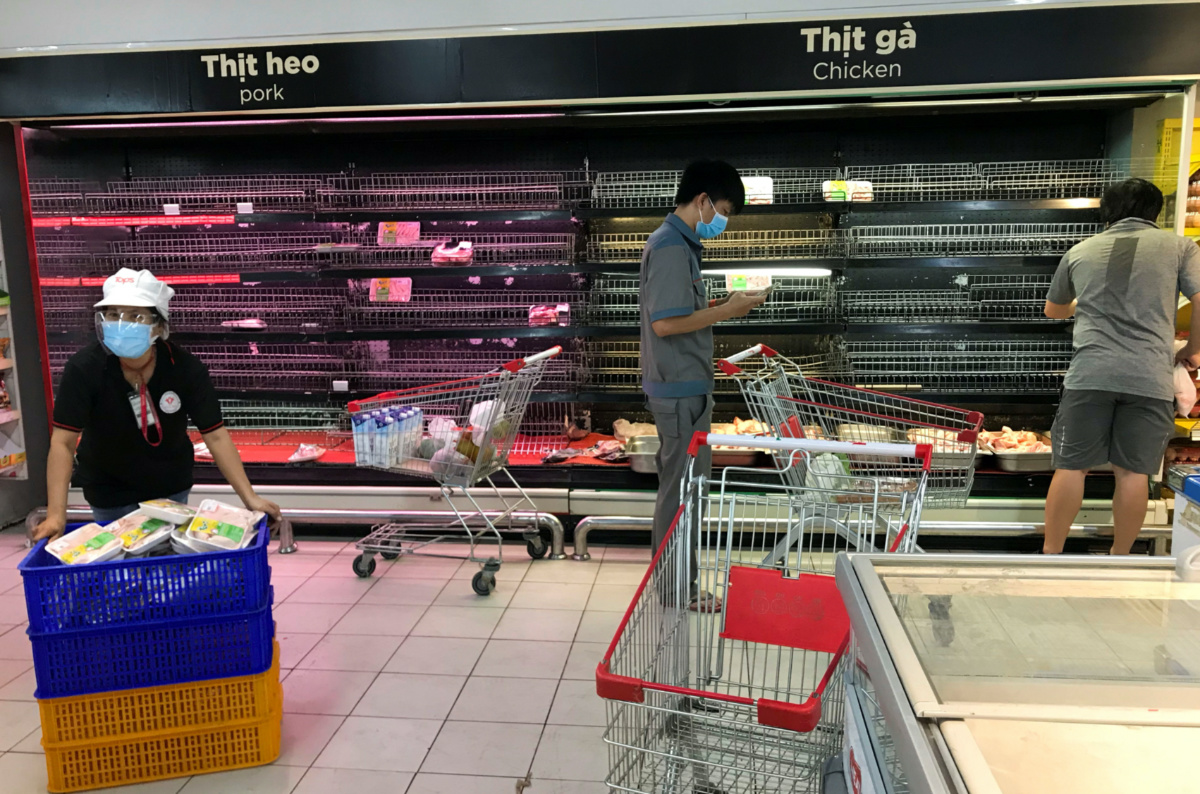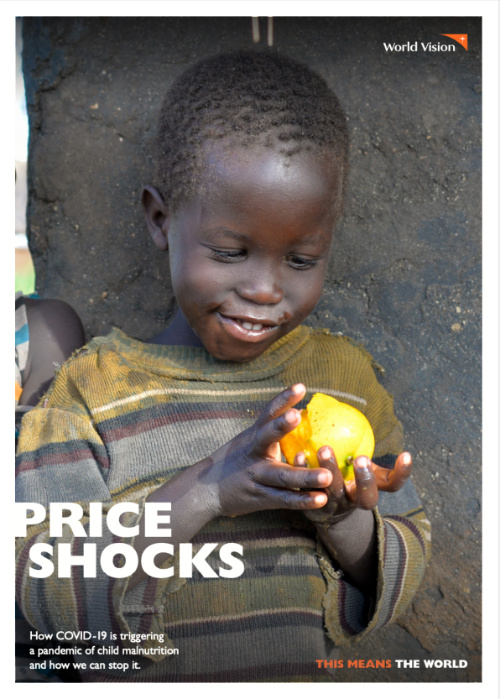Food prices around the world have reached their highest point in a decade, jumping by more than 50 per cent in nations including Syria, South Sudan and Myanmar since the start of the coronavirus pandemic, according to a new report from World Vision Australia.
The report – Price Shocks: How COVID-19 is triggering a pandemic of child malnutrition and how we can stop it – found that between February last year and July this year prices increased in Myanmar by 54 per cent, in Lebanon by 48 per cent, Mozambique 38.3 per cent, Vanuatu 30.9 per cent, Syria 29.2 per cent and Timor-Leste 17.7 per cent. It contrasts these findings with data showing prices in Australia rose just 3.5 per cent over the same period.

Customers search for food on near empty shelves that were depleted due to panic buying amid the coronavirus disease (COVID-19) pandemic in Ho Chi Minh City, in Vietnam on 21st August. PICTURE: Reuters/Stringer
The report also provides estimates of the amount of time it would take someone to earn to pay for 10 common items including sweet bananas, rice, wheat flour, raw sugar, corn cobs, eggs, cooking oil, a raw chicken, tomatoes and milk. While the data shows it would take just an hour to earn enough to pay for them in Australia, the time taken to do so in Vietnam is estimated at half a day’s work and in Cambodia its a day’s work. This figure rises to two days in Lebanon, three in the Solomon Islands and reaches as high as six in Chad and the Democratic Republic of Congo. The figure for South Sudan was estimated at eight days.
The report said the world was now “on the brink of a child malnutrition pandemic”.
“This is due to a perfect storm of sky-rocketing food prices, lower incomes, reduced nutrition services and disrupted food supply chains as a result of COVID-19,” it said, adding that it wasn’t too late to prevent the worst of the nutrition crisis if governments, the private sector and NGOs take action to strengthen food supply chains and empower parents and caregivers with “economic tools” to provide nutritious food for their households.

The cover of World Vision Australia’s ‘Price Shocks’ report.
World Vision Australia CEO Daniel Wordsworth said in a statement that job losses and lower incomes from the pandemic were forcing “millions of families to skip meals, go for cheaper, less nutritious food, or go without food altogether”.
“As always, children suffer the most – they are the most vulnerable to hunger because they have a greater need for nutrients, they become undernourished faster than adults and are at a much higher risk of dying from starvation,” he said.
“And this is not only about hunger or malnutrition – it’s also about how families cope, how they resort to desperate measures such as child marriage and child labour to put food on the table. It’s a recipe for disaster.”
Data in the report shows that some 161 million more people went hungry in 2020, a 25 per cent increase in 2019 figures, and that 31 million more people were now classified as poor due to the impact of the COVID-19 pandemic. In Africa and the Middle East, more than 41 million people are suffering emergency levels of food insecurity and/or famine-like conditions.
Other data in the report illustrates the impact of the coronavirus on children. It shows that some 370 million children missed out on school meals in 2020 due to COVID-induced school closures and that there was a 40 per cent drop in coverage of essential nutrition services to children. It also cites a recent study showing that unless checked, an estimated 250 children will die per day from pandemic-related malnutrition by the end of 2022.
World Vision – which last year reached some 12 million people with food and nutrition around the world – is urging the Australian Government to commit $A150 million famine-prevention package to avert a worsening of the crisis.
“Generosity in the face of need is in our DNA, so I am certain Australians will respond – the same way we responded to the Boxing Day tsunami, the Ethiopia famine and the Beirut port explosion,” Wordsworth said.
“Together, we can prevent the worst of this hunger crisis. But we can’t do this alone. That’s why we’re asking the Australian Government to join with us and fund this famine-prevention package, because there’s no place for famine in the 21st century.”





